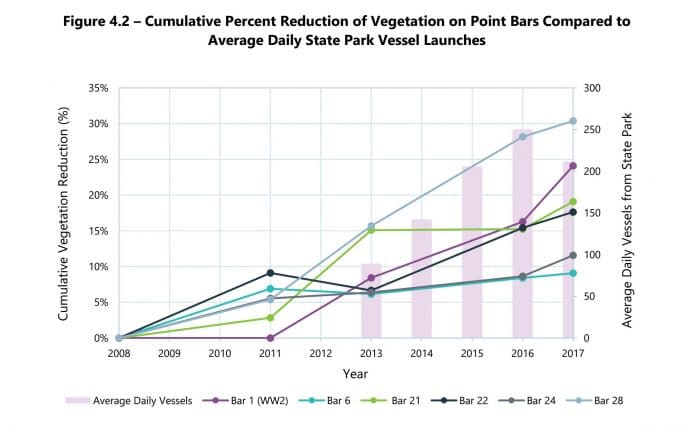The long-awaited results from the Weeki Wachee River carrying capacity study conducted by an independent third-party consultant group were presented in a public workshop on February 5, 2020. Human traffic — which rose significantly in 2016 — is shown to be the primary stressor, causing bank erosion and a decline in water quality. No policies were made or changed during the meeting.
The Coast Guard Auxiliary Meeting Hall was once again packed with residents eager to hear the results and learn about the future solutions planned for the river. The extensive study was conducted from May 2018 through August 2019.
Water Resources Scientist Mary Szafraniec, PhD, PWS of Wood, a global consultancy in several areas, including environmental solutions explained the extensive data in a conversational tone, using easily understood photographs of the areas studied and charts of the resulting data.
Alexander Springs in Ocala was used as a comparison to visually show the differences in similar features compared to the Weeki Wachee.
“Point Bars” are the areas at which visitors to the river are most likely to park their vessels and wade or swim. Many of the popular point bars resemble a beach, with a sandy area above the water line, extending at an incline into the middle of the river. The point bars that are troubled have been denuded, or made free of vegetation from foot traffic and the parking of vessels.
The denuding of vegetation was shown visibly in the “Recreational Trampling Assessment” where a member of the data collection team stepped on vegetation 200 times to simulate the foot traffic of visitors. The trampling study photos showed grassy vegetation almost completely removed and some submerged in the resulting water-filled indentations left by the weight of the person conducting the study.
“If you have people getting out of their boats and they’re walking along these bars, they are causing some kind of an impact … After 200 tramples, it’s just basically a puddle of water.” Szafraniec showed a photo taken months later that showed the area had not regrown any vegetation.
Additionally, it was noted that after 6 months, where there was regrowth, the areas contained “exotic, nuisance vegetation.” The site will be revisited in May, which is the one-year point to see if further recovery has taken place.
A man-made feature of the river was a rope swing that was attached to a tree some time ago. The tree holding the rope has been a common high-traffic area, attracting adventurous types who climbed the tree and used the rope to swing out over the river and drop in the water.
During the study, the tree fell, landing in the river.
Underwater vegetation is also at risk. Statistical analysis numbers showed how recreational vessels impacted water quality and clarity, resulting in increased turbidity. “Turbidity” describes the clarity of the water. When turbidity is increased, light does not penetrate the water well enough to reach underwater vegetation, so it is also affected by decreased sunlight.

